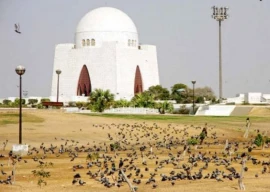
Mobile handsets are in the hand of 67% of the world population, the largest consumed electronic device in the world.
The advent of value added service offerings like 'M-commerce' over mobile networks have far-reaching effects. The global mobile money industry has grown significantly in size and scope since last five years. By 2015, online shoppers worldwide will spend $119 billion on goods and services purchased via mobile phones, representing about 8% of total e-commerce sales, ABI Research predicts. According to Juniper research, amount of mobile payment transaction is expected to reach $630 billion by 2014, with half a billion mobile money users globally. Mobile remittances are yet another segment of mobile commerce having a sound anticipation throughout the world. The GSMA forecasts that the ‘formal’ global remittance market could be grown from around US$300 billion by 2010 to over US$1 trillion in five years with the help of mobile communications. Encouragingly, according to World Bank, Pakistan is among the top 20 remittance-receiving economies with a size of $9 billion.
Mobile banking is another growing phenomenon; talking on a global scenario almost four billion people are unbanked—with more than two-thirds of the unbanked population in the world’s low and middle-income countries. However, evidence from countries like Brazil, South Africa, India, and Kenya strongly suggests that there is rapid popularity of ‘mobile banking’ services.
Pakistan Prospective
Our country has experienced excelling growth for both mobile and banking sectors since their de-regulation; today we are witnessing mergers of their products and services. According to State bank of Pakistan, growth and turnaround in Pakistan’s banking sector has been remarkable and unprecedented in recent years. Classified as Pakistan’s and the region’s best performing sector, financial sector assets have risen to over $185 billion, its profitability is exceptional and at an all-time high, non-performing loans (NPLs) are at an all-time low, credit is fairly diversified and bank-wide system risks are well-contained. Almost 81% of banking assets are in private hands. Similarly, the mobile sector in Pakistan has observed an enormous growth with a subscriber base reaching above 100 million, growing at 12 to 15%, which was only five million in 2004-05.
Despite this rapid growth, presently there are only 25 million bank accounts in the country making 14% of the adult population with an access to formal banking services. If the opportunity relationship is mapped between the numbers of bank accounts (25 million) versus the number of mobile subscribers (102 million), there exists a comprehensible window of facilitation for the unbanked population of the country mostly living in rural and remote areas. This window of facilitation could be transformed into a realization through mobile banking services. An open, transparent and robust mobile banking regulatory framework would not only assist the population at large but would also be bridging the ability to measure undocumented economy of Pakistan.
The high population density of mobile Pakistan is features auguring very well for success of a technology driven thrust in branchless banking. Five mobile phone companies have brought the entire country under comprehensive network coverage, with steady growth in number of mobile phone subscribers (already well above hundred million), and also with ample information processing capacity to engage in partnerships with licensed and regulated financial service providers to devise and introduce innovative cost effective means of introducing new segments of banking.
We have already started witnessing availability of valuable mobile commerce services offering from mobile operators and financial institutes. These services have empowered mobile subscribers to deposit and withdraw cash, make utility bill payments, send or receive money, purchase mobile card vouchers, make postpaid mobile bill payment and much more by using diversified array of convenient channels. Telenor Easy Paisa and UBL Omni are featured examples of local mobile commerce solution introduced in the country. The success of the financial services available in the country can be judged by the fact that by December 2010, Telenor’s Easy Paisa service has hosted 9.9 million transactions with a total worth of PKR 19 billion passed through the system. On the similar ground, last year MCB was nominated among the top four best mobile money services category for Global GSMA Mobile Awards.
Required Efforts
However, the present regulatory framework available under Electronic Transfer Act (2005) and Branchless Banking Regulations (2008) promulgated by State Bank of Pakistan is based on 1-to-1 relationship. This offers a close system between a single bank and a single mobile operator required to develop their own payment solutions with low outreach possibility in terms of subscriber’s facilitation.
Subsequent to various public dialogues arranged on the topic of mobile commerce, it was felt that there is a dire requirement to develop a unified and open regulatory framework for promotion of mobile banking services in the country.
The requirement gave birth to an idea presented by myself that a ‘TPS’ (Third Party Solution Provider) model may be opted for carrying out mobile commerce transactions in the country, a model gathering Mobile Operators (Providing m-commerce application interface), Financial Banks (Providing Financial services), Consumer (End-user utilizing m-commerce services) and a TPS (A third party vendor performing integration of all entities).
The primary approach is to encourage Many-to-Many service delivery mechanism as opposed to One-to-One payment system. The introduction of third party payment networks also known as MPSP (Mobile Payment Service Providers) would be of immense advantage since these third-party payment handing agents can work with many providers, rather than the closed networks. We could foresee opportunities for service providers (both from Banks and Mobile Sector) who move quickly to create new products, especially if they can establish shared networks of third party agents. In order to introduce a unified regulatory regime catering the requirements of operators, financial institutes and the consumer by providing a many-to-many relationship, PTA has join hands with SBP for drafting of ‘Mobile Banking Regulations’ based on third part service provider model.
This approach is likely to support mobile convenience to everyday banking while offering state-of-the-art security to mobile users and financial institutions. Consumers belonging to any bank and mobile operator would have the freedom of managing their finances when and where they want. This means that all banks and mobile operators would be able to connect with each other resulting in a situation where any bank customer can access their accounts, transfer funds, and interact with all other bank customer using mobile connection. This also provides an extra freedom to all service providers to start mobile banking offers to their consumers.
Under this model, all banks and all operators could join hands to offer services to virtually all bankable customers. This model offers the maximum connectivity and hence maximum outreach but requires a central transaction processing system that could be handled by a MPSP. Relying on third party service providers would also “liberate” banks from location constraints, allowing them to compete for customers anywhere based on product design, marketing, and branding.
Chairman Pakistan Telecommunication Authority
This post was originally published on the CIO Pakistan website here.
1731570357-0/elon-musk-(1)1731570357-0-405x300.webp)
-(1)1717678110-0/Kendrick-(1)-(1)1717678110-0-165x106.webp)



1732428532-0/BeFunk_§_]__-(43)1732428532-0.jpg)




1725254039-0/Untitled-design-(24)1725254039-0-270x192.webp)






COMMENTS (3)
Comments are moderated and generally will be posted if they are on-topic and not abusive.
For more information, please see our Comments FAQ